Argentina
Recipes

1 GEOGRAPHIC SETTING AND ENVIRONMENT
Argentina is a wedge-shaped country, the second largest (after Brazil) in South America. In the west, it has the Andes Mountains, but the majority of Argentina's land is low. Because Argentina lies in the Southern Hemisphere, the winter months are May through August, and the warmest summer month is January. Argentina's climate and rich, lowland regions combine to make it one of the world's greatest food-producing nations. More than 4 percent of the world's cattle are raised by Argentine cattle ranchers. Argentina is also South America's largest producer of honey, an ingredient that makes its way into many delicious Argentine desserts.
2 HISTORY AND FOOD
Native Indians lived in Argentina many years before the European explorers arrived. Members of an Indian tribe in the northern part of Argentina were farmers who grew squash, melons, and sweet potatoes. Spanish settlers came to Argentina in 1536. Between 1880 and 1890, nearly one million immigrants came from Europe to live in Argentina. Most were from Italy and Spain. The Italians introduced pizza, as well as all kinds of pasta dishes, including spaghetti and lasagna. British, German, Jewish, and other immigrants also settled in Argentina, all bringing their styles of cooking and favorite foods with them. The British brought tea, starting the tradition of teatime. All of these cultures influenced the dishes of Argentina.
3 FOODS OF THE ARGENTINES
Beef is the national dish of Argentina. There are huge cattle ranches in Argentina, and the gaucho, or Argentine cowboy, is a well-known symbol of Argentine individualism. Many dishes contain meat, but prepared in different ways. A favorite main course is parrillada, a mixed grill of steak and other cuts of beef. Grilled steak is called churrasco , a beef roast cooked over an open fire is called asado , and beef that is dipped in eggs, crumbs, and then fried is called milanesa . Carbonada is a stew that contains meat, potatoes, sweet potatoes, and chunks of corn on the cob.
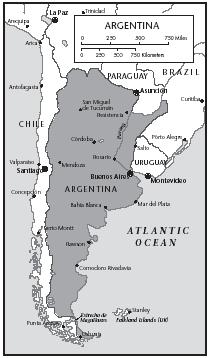
Carbonada Criolla (Stew with Meat, Vegetables, and Fruit)
Ingredients
- 3 Tablespoons olive oil
- 2 pounds of stewing beef, cut into 1-inch chunks
- 4 large tomatoes, chopped thick
- 1 green pepper, chopped thick
- 1 large onion
- 3 cloves garlic, minced
- 2 bay leaves
- 1 teaspoon oregano
- 2 cups canned chicken stock
- 3 potatoes, diced into 1-inch cubes
- 3 sweet potatoes, diced into 1-inch cubes
- 2 ears of corn, cut into 1-inch widths (or use 2 cups of frozen corn)
- 2 zucchini, diced into ½-inch pieces
- 2 peaches in ½-inch pieces
- 2 pears in ½-inch pieces
Procedure
- Heat oil in heavy pot.
- Brown beef in separate batches so that all of it gets cooked. Remove from the pot and set aside.
- In that same pot, cook tomatoes, pepper, onion, and garlic until soft.
- Add bay leaves, oregano, and chicken stock, and bring to a boil.
- Return beef to the pot, and add potatoes and sweet potatoes. Cover and simmer 15 minutes.
- Stir in zucchini and corn. Simmer 10 more minutes, or until vegetables are almost soft, then add the peaches and pears.
- Cook 5 more minutes.
- Serve hot.
Makes 6 to 8 servings.
Because many Argentines are descendents of the Italian immigrants who came to Argentina in the late 1800s, Italian dishes are found throughout the country. Some favorite Italian dishes include pizza, all kinds of pastas (such as spaghetti and ravioli), and ñoquis , (gnocchi—potato dumplings) served with meat and tomato sauce.
Argentines eat more fruit than almost any other group of people in the world. Some favorite fruits include peaches, apricots, plums, pears, cherries, grapes, and tuna , the fruit of a prickly pear cactus.
Empanadas , little pies usually stuffed with beef, vegetables, and cheese, are a favorite dish. These are eaten by hand and they are often enjoyed as a snack, or may be carried to school for lunch. Chimichurri , a dipping sauce, is usually served with empanadas . Because the sauce has to sit for two hours before eating, it is prepared before the empanadas .
Chimichurri (Dipping Sauce)
Ingredients
- ½ cup olive oil
- 2 Tablespoons lemon juice
- ⅓ cup fresh parsley, minced
- 1 clove garlic
- 2 shallots (or 2 small onions), minced
- 1 teaspoon minced basil, thyme, or oregano (or mixture of these, if preferred)
- Salt and pepper to taste
Procedure
- Combine all ingredients in a bowl and let sit for at least 2 hours before serving with empanadas .
Empanadas (Little Meat Pies)
Ingredients
F ILLING:
- 1 pound ground beef
- ½ cup onions, chopped
- 8 green olives, chopped
- 1 teaspoon salt
- ¼ teaspoon oregano
P ASTRY:
- 2½ cups flour
- 1 egg yolk
- ½ cup water
- ¼ cup butter
- 1 teaspoon vinegar
- ½ teaspoon salt
Procedure
F ILLING:
- Brown the ground beef and onions in a frying pan until meat has lost all its pink color.
- Stir in the remaining ingredients.
- Drain the mixture well, and allow it to cool.
P ASTRY:
- Preheat oven to 400°F.
- In a bowl, mix the flour, butter, egg, yolk, and vinegar together by hand.
- Stir the salt into the water and sprinkle water, a little at a time, over the flour mixture.
- Knead the dough until it is smooth. (To knead, flatten the dough on a surface that has been dusted with a little flour. Fold the dough in half and flatten again. Turn. Repeat the process for about 15 minutes.)
- For each empanada , roll ¼ cup of dough into a 9-inch circle.
- Put ½ cup filling on the circle, and fold it in half.
- Press the edges of the dough together, and poke a small hole in the top using a toothpick. Place on a cookie sheet.
- Repeat process until all the dough and filling are used up.
- Bake 10–15 minutes.
- Serve hot with chimichurri .
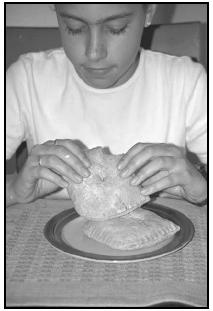
4 FOOD FOR RELIGIOUS AND HOLIDAY CELEBRATIONS
Lent is the 40-day period preceding Easter in the Christian year. During the week before Lent, a large festival, Carnival, is celebrated in many parts of Argentina. During Carnival, people dress up in costumes and dance. They eat spicy food, including corn stew and humitas en chala (corn patties wrapped and cooked in their husks). It is a tradition to eat a cake in the shape of a large ring. On Easter, children eat chocolate eggs with tiny candies hidden inside.
Because it is also tradition in the Roman Catholic Church to not eat meat during Lent, Argentines eat more seafood dishes during this time. Bocaditos (finger sandwiches), made with shrimp are a popular lunch or snack food during Lent.
Bocaditos (Finger Sandwiches)
Ingredients
- 12 thin slices French bread
- 1 container (3-ounce) cream cheese with chives
- ½ cucumber, thinly sliced
- 4 to 6 precooked shrimp
- 4 cherry tomatoes, sliced
Procedure
- Cut crusts off the bread.
- Spread a thin layer of cream cheese on each slice of bread.
- Place cucumber slices, tomatoes, and shrimp on one slice, and cover with another slice of bread to make a sandwich. (Any combination of these ingredients may be used.)
- Cut into triangles or rectangles.
Serves 8 to 10.
On Christmas Eve, celebrated on December 24, Argentines eat a late meal of cold beef, chicken, or turkey, and fruit salad. Because Christmas occurs during summertime in South America, Argentines often eat the meal outside on decorated tables. After dinner, they eat almonds, dried fruits, and pan dulce , a sweet bread that is similar to fruitcake but has fewer fruits and nuts.
Fruit Salad with Frozen Yogurt
Ingredients
- 3 Tablespoons honey
- 3 Tablespoons lemon juice
- 1 medium apple, cored and chopped
- 1 medium plum, pitted and sliced
- 1 large orange, peeled and sliced into ¼-inch rounds
- 1 large grapefruit, peeled and sectioned
- 1 medium banana, peeled and sliced into rounds
- 1 quart frozen vanilla yogurt
Procedure
- In a large bowl, whisk together the honey and lemon juice.
- Stir in the fruit, and serve topped with a scoop of frozen yogurt.
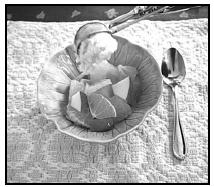
In many areas of Argentina, people hold festivals to honor aspects of the environment. For example, a city on the Atlantic coast celebrates the seafood harvest that is brought in from its fishing grounds. It is tradition for people to eat a seafood feast of shrimp, crab, and scallops. After the feast, a parade with people dressed in sea-creature costumes is held. Someone dressed as The Queen of the Sea leads the parade, sitting in a giant seashell.
5 MEALTIME CUSTOMS
Argentine families, like families everywhere, are busy. Because everyone is on a different schedule, they aren't able to eat every meal together. Desayuno (day-sigh-OO-noh, breakfast) is often a light meal of rolls or bread with jam and coffee. Most working people in the cities have a small
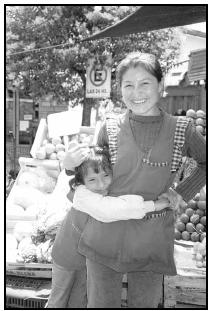
In the late afternoon, Argentines have a snack of tea, sandwiches, and cake to hold over their appetite until dinner ( cena, SAY-nah), typically eaten around 9 P.M. The tea-time tradition comes from the British immigrants that brought tea to Argentina in the late 1800s.
Vendors sell food on the streets (the equivalent to "fast food"). Ice cream vendors sell helado, Argentine ice cream, and warm peanuts, sweet popcorn, and candied apples. Some vendors sell choripan (a sausage sandwich) and soda. Empanadas , little pies stuffed with beef, chicken, seafood, or vegetables, are a popular snack. Children can take vegetable-filled empanadas to school for lunch. A favorite drink is a submarino , or milk with chocolate syrup.
Submarino (Milk with Chocolate Syrup)
Ingredients
- 1 glass of cold milk
- 1 teaspoon chocolate syrup
Procedure
- Place the spoon with the syrup in the cold milk, but don't stir it.
- Drink a little milk, then lick some of the chocolate off the spoon.
- Continue until glass is empty.
The dinner meal has several courses, including meat dishes, and ends with dessert. Dulce de leche (milk jam) is a favorite dessert for many Argentine children. It is often eaten with bananas or as a filling in alfajores (corn starch cookies).
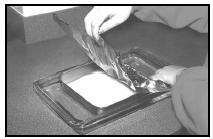
Dulce de Leche (Milk Jam)
Ingredients
- 1 can sweetened condensed milk
Procedure
- Preheat oven to 425°F.
- Pour the sweetened condensed milk into an 8-inch round pie or square cake pan, and cover it with foil.
- Place the pan in a shallow pan filled with one inch of water. Bake for one hour.
- Allow to cool; eat with bananas or as a cookie filling.
Alfajores de Maizena (Corn Starch Cookies)
Ingredients
- 2½ cups cornstarch
- 1⅔ cups flour ½ teaspoon baking soda
- 2 teaspoons baking powder
- ¾ cup sugar
- 1 cup (2 sticks) butter or margarine
- 3 egg yolks
- 1 Tablespoon vanilla extract
- Grated lemon peel
Ingredients
- Preheat oven to 350°F.
- Sift the cornstarch with the flour, baking soda and baking powder in a bowl.
- Beat margarine and sugar, and add the egg yolks one at a time. Mix well.
- Add dry ingredients a little at a time.
- Add vanilla and lemon peel. Mix to form a stiff, elastic dough.
- Stretch until the dough is about ½-inch thick over surface covered with flour.
- Cut into circles using the rim of a drinking glass or a round cookie cutter and put the circles on an ungreased cookie sheet.
- Bake for about 15 minutes. Let cool.
- Spread some dulce de leche on one cookie and sandwich with another cookie, and repeat with the rest of the cookies.
6 POLITICS, ECONOMICS, AND NUTRITION
Most people in Argentina receive adequate nutrition in their diets, although the World Bank classifies a small percentage as malnourished. Almost three-fourths of the population has access to safe drinking water and sanitation (hygienic conditions and safe disposal of waste products). A small percent of children under age five are underweight (about 2 percent) or stunted (are short for their age, 5 percent). These children are from the poorest Argentine families, and may live in cities or rural areas.
7 FURTHER STUDY
Books
Argentina . Boston: APA Publications, 1997.
Greenberg, Arnold. Buenos Aires: And the Best of Argentina Alive! Edison, NJ: Hunter Publishing, Inc., 2000.
Hintz, Martin. Argentina . New York: Children's Press, 1998.
Novas, Himilce and Silva, Rosemary. Latin American Cooking Across the U.S.A. New York: Knopf, 1997.
Parnell, Helga. Cooking the South American Way . Minneapolis: Lerner, 1991.
Peterson, Marge. Argentina: A Wild West Heritage . Parsippany, NJ: Dillon Press, 1997.
Web Sites
Global Gourmet. [Online] Available http://www.globalgourmet.com/destinations/argentina/ (accessed March 1, 2001).
Latin American Recipes. [Online] Available http://www.ma.iup.edu/Pueblo/latino_cultures/recipes.html (accessed March 6, 2001).
Margarita's Favorite Recipes. [Online] Available http://www.lacabe.com/marga/food/recipes/alfajores.html (accessed February 24, 2001).
That empanada is the weirdest looking thing I've ever seen.
Lots of misinformation on this site, sadly enough. Lots.
For example, chimichurri is ALWAYS made with parsley. Finger sandwiches aren't bocaditos. Bocaditos are croquettes. A Submarino is NEVER made with chocolate syrup! It's a bar of dark chocolate submerged in boiling milk. etc etc etc
Meh.